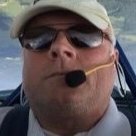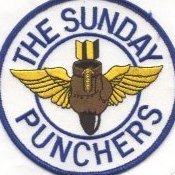Leaderboard
Popular Content
Showing content with the highest reputation on 06/05/2020 in all areas
-
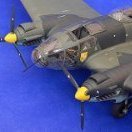
1/32nd scale Avro Shackleton - scratchbuild project
Rainer Hoffmann and 17 others reacted to tomprobert for a topic
Thanks, Criag - and no is the answer. Me and electrics don't really get on, but maybe it's something I should consider in the future. Howdy Partners I hope everyone is faring OK in these strange times. A little more Shackleton progress to update you on... I have been working on getting the cockpit roof attached to the fuselage of late. I spent a fun (not) couple of hours finishing the making of the sills for the transparent parts to sit on when the time comes - Evergreen to the rescue once again: IMG_0191 by Thomas Probert, on Flickr With that done, I made the pilots' overhead panel from some generic bits and bobs from the spares box - not particularly accurate but it's almost impossible to see it once the roof is on - and sprayed the inside of the cockpit roof matt black: IMG_0202 by Thomas Probert, on Flickr A final test-fit then followed to ensure all of the interior fits as it should - which thankfully it did: IMG_0204 by Thomas Probert, on Flickr You can see how little of the interior is actually visible, which is why I haven't really gone to town on the insides. Before finally attaching the roof section I made some more tabs to ensure a strong and secure join, and then masked the windows from the inside to keep dust and future paint out of the flightdeck. I then slathered P-38 automotive filler over the joins and allowed everything to settle for a couple of days before attacking it with the sandpaper. IMG_0207 by Thomas Probert, on Flickr As you can see things have gone reasonably well, but there is a pronounced dip where the cross-hatched area is that'll need more filler. This was due to me not being careful enough when constructing the fuselage but P-38 is the scratch-builder's best friend and it should make light work of this. You can see the 'dip' more clearly when a straight line is superimposed on the pictures: IMG_0209 by Thomas Probert, on Flickr So here's the state of play now - some more filling and sanding over the weekend and then some primer to see how it's all bedded in: IMG_0206 by Thomas Probert, on Flickr Until next time, Tom18 points -

1/32 F7U-3 Cutlass (Fisher model & pattern) completed
MH Design Scale Models and 9 others reacted to mydesign for a topic
Completed the 1/32 Fisher kit of the F7U-3 Cutlass. More detailed modelling info on my webpages here: https://designer.home.xs4all.nl/models/f7u-cutlass-32/f7u-32-1.htm Meindert10 points -
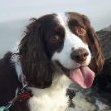
1/32 Hasegawa P-47 "Oh Johnnie"
Tolga ULGUR and 8 others reacted to JefH for a topic
Hi again. Made a little more (slow) progress on the P-47. Did a little oil dot filtering, which isn't really showing up in the photos to well and a panel line wash before hitting the model with some Alclad flat clear. I think I will devote some attention to the smaller items while I let the clear set up for a couple days. Then I can hit it with some further weathering. The windscreen and canopy are just being held on by gravity. The gaps will disappear when they're fixed in place. It kind of a tricky model to weather I've realized mixing a well used fuselage with replacement wings. I'm running the risk of it looking like I forgot to weather the wings when I'm done. Thanks again for looking. Jeff9 points -
HPH's kit of the Fw-189. A very advanced resin kit with detail that would make mainstream injection moulding companies quiver with fear to reproduce. Definitely no "shake & bake" kit with a number of challenges, but an enjoyable if taxing build. Painted with Xtracolor enamels and Tamiya acrylics. Thanks for looking. Angelo7 points
-
Last couple of sessions were really just detail work and reinforcing the landing gear. Both axles and oleo struts which insets into the fairing/leg were drilled and pinned after on broke. I then proceeded to break one of the fittings where steel pin inserted into drilled axle housing. I ended up epoxying it. THE LANDING GEAR IS WEAK. I say again, THE LANDING GEAR IS WEAK. I didn't even attempt to use the tail wheel fork, instead fashioning a metal one from a steel paper clip inserted into a brass tube inserted into tailwheel boot. I weighed the model and as it sits in photos its 4.5oz/127.6g and it will get heavier with rigging, decals, sealcoating, etc. I would highly recommend not installing the gear until absolutely last if you don't choose to reinforce with metal pins. Here are current photos of it along with another Boeing product. I really don't anything left to do before rigging as I won't permanently attach engine/prop and control surfaces and a few other tiny items such as fuselage ground handling handles, intake trunk, et. until after rigging and clearcoating. I will be filling the wingtip navigation lights. While most restored Stearmans have navigation lights (and strobes for safety) now, most during the war did not. They had the mounting bracket, but were covered over with fabric. The prop is one I scavenged from a Williams Brother F8C Sparrowhawk. It had right length and hub for "converting" to a McCauley ground adjustable like I wanted to use. So, my Silver Wings Stearman still has both props. So, here it is with 90% done and 90% to go... It looks like a Stearman to me and though I've not checked it directly with any drawings, I haven't really seen much I would say is blatantly wrong. My mind is already racing about which I will build next...likely the other Roden kit converted to represent my dad's cropduster, "Ole Suzy". It will be pretty easy given it retained the Continental R-670 (W-670 Continental Model number) engine and cowling. It will be a pretty easy conversion. Hopefully by then, ICM's Stearman will be out for me to build as a stock Navy N2S-3. If not, I'll build the Silver Wings as a PT-13 or N2S-2. The ultimate will be a 450hp cropduster conversion. I haven't yet picked out a specific one to model or at least use a a guide yet...there are so many to chose from.7 points
-
6 points
-
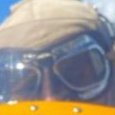
ICM 1/32 Polikarpov I-16 type 28
Alain Gadbois and 5 others reacted to Warbird for a topic
Hi there, Unfortunately not much time to post WIP pics. I have completed the basic camo painting - now lets add a bit of grime to this donkey :-) Cheers6 points -
Lukgraph DH 89 Rapide
scvrobeson and 5 others reacted to seiran01 for a topic
Rapide kits just went online for sale again in the store, go get em guys, I just snagged mine!6 points -

Malvinas Mirage
scvrobeson and 5 others reacted to blackbetty for a topic
some paint touchups required6 points -
Pauke! Pauke! – NIGHTFIGHTER! Me 262 B-1a/U1 Red 12
Antonio Argudo and 5 others reacted to 109 for a topic
Hi, some progress in assembling and weathering the 262 ... time for dinner now :-)6 points -
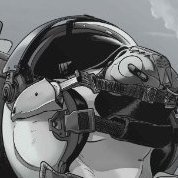
F-15C 32nd TFS AFB Soesterberg 1986
Loach Driver and 4 others reacted to Cheetah11 for a topic
During the Cold War USAAFE kept units in Europe for air superiority and interception of Eastern Block intruders. When the Mig 25 Foxbat was introduced by the Eastern Block , the F-4 units were promptly replaced by the F-15A and later by the F-15C. These were stationed at Bitburg and Spangdahlem in Germany and Soesterberg in the Netherlands. The 32nd TFS was the unit stationed at Soesterberg and at the time the only F-15 unit to carry a bit of nose art in the form of a Wolfhound on the left side of the cockpit. It was also the only USAAF unit to be under the control of another air force, in this case the Netherlands Air Force. The Tamiya model was build pretty much OOB. A few small details was added in the cockpit and the fuel tank modified from a Sufa tank to give a better representation of the belly tank. The afterburner nozzles were also shortened. This kit is relatively old but is still a pleasure to build and because of its size has a great presence. A pity Tamiya has not updated this like the F-14. One sprue with modern weapons, a tank and new nozzles would fix the most of the inaccuracies and make it easy to do a more modern Eagle. Here is the model( part of the Cold War Jets) group build. And now off to the display case. Nick5 points -
Here is the Tornado. I finished it towards the end of last year but has just been a little lazy in photographing it. Revell kit with all the necessary changes scratch built. Enjoy. Nick5 points
-
This time I would like to take focus on the kit decals. Printing looks good and colors are well in register. So technically good quality. But stencils are missing and the selected aircraft are not suitable for the kit parts without modifications. Here are the selected aircraft: Douglas A-26B-15-DT, s/n 43-22337, c/n 18484, Douglas Fuselage Number 86 Produced in Tulsa, OK and delivered to USAAF in Aug-Sep 1944. Served in 416th Bomb Group, 670th Bomb Squadron in Base A-55 in Melun/Villaroche, France. During the mission # 201 on Friday, Feb 9, 1945 with Henry W. Borman and Raphael J. Perujo as the flight crew, the aircraft was flying as the # 5 ship in the Flight III of the Box I in a 42 aircraft mission and it bombed Scherfede, Germany at 3:03pm in a cloudy weather from an altitude of 12,500 feet. After that the aircraft failed to return to its base and was force landed on the alternative landing field B-75 because of shortage of fuel. The nose wheel tire blew out and the aircraft ran off the end of the runway. Neither of the crew members were injured. I was not able to find any photos of the plane but I gathered some information about other similar aircraft of the same production block and the same Bomb Squadron. Based on that information it seems that there are a few modifications needed: The nose should have 6 guns instead of 8. The lower turret, upper periscope, nose pitot tube and the left side slanted antenna behind the cockpit need to be added. This block had a loop antenna instead of the 'football' antenna of the kit. The extra belly vent/antenna should not be used. And the cockpit should be modified for one pilot only. Underwing gun packs may possibly be used as well. Painting: The instructions are correct, except that olive drab on the engine cowlings should go all the way down to cover the plane-side half of the cowlings. Also the black area on the rudder should be narrower. Markings: The kit identification code '24-D' is most likely wrong. For this Bomb Squadron all the Invaders used 'F6' as the first part of the code and, if the letter 'D' was correct for this plane, the code should be 'F6-D' painted in black around the US insignia, 'F6' in forward of the insignia and 'D' in the tail. 'F6' should be with higher letters than '24' on the kit decals. Not a difficult job to mask and paint. Here is a picture of an A-26B-20-DL model of the same Bomb Squadron: Douglas A-26B-61-DL, s/n 44-34575, c/n 27854 This -61-block B-model was originally produced for the Pacific theatre so the lower turret was replaced by a 125-US gallon auxiliary tank for extra range. The plane was designated as a B-26B and sold to France Air Force (Armee de l'Air) in 1951 where it got the registry number BC-575 and the plane code 'Q'. In the 1950's the aircraft served in French Indochina with the unit GB 1/19 'Gascogne' in Tourane and later with the plane code 'D' with the unit GB 1/25 'Tunisie' in Cat Bi. The plane was finally broken up. Please, notice the 'football' antenna on the belly. Note: These drawings mistakenly mention this aircraft as a block 60 model and also the first drawing mistakenly shows the lower turret that this plane did not have. Modifications needed: Replace the flat canopy of the kit with a bubble canopy (vacform? resin?). Move the 'football' antenna to the belly side and paint it black. Don't use the belly vent/antenna. Add the upper periscope. Insert 3 x 0.50 in (12.7 mm) guns to each wing (wing mounted guns, not in underwing gun packs). Add hard points for rockets. And the cockpit should be modified for one pilot only. Painting: Kit painting instructions look correct. Only the olive drab on the nose should go a bit further to the nose and not so wide. Please, see the above photo for clarification. Markings: Markings show the plane in Tourane, French Indochina in 1951. Again, markings look right. The only confusing part is that decals have the unit insignia but it is not mentioned on the instructions. Just look at the drawing above for the insignia placement. All in all, if only there was the bubble canopy available as an after market part, this version would be the easiest one to build. And with an interesting history. Douglas A-26B civil version (On Mark Marketeer), s/n 44-34765, c/n 28044 Delivered to Reconstruction Finance Corp. as 44-34765 and immediately put up for disposal in 1945. Sperry Gyroscope Co, Great Neck, NY registered as N67160 and used it in 1954-1964. R.C. Johnson, Las Vegas, NV bought it in 1966. After that International Commercial Aviation Service based at the Kennedy International Airport, NY bought it and used it in 1969-1970. Then in August 1970 the plane was sold to Germany to W. Rall in Munich and at that time it was registered as D-CAFY. It was impounded and parked in open at the Antwerp Airport in 1972-1974. Since 1976 it has been restored and on display for the Musee Royal de l'Armee in Brussels, nowadays the Brussels Air Museum. The plane has been painted to represent a fictional war bird 'Mission Completed', aircraft code 'AN-J'. During the plane's history there was an interesting episode of lobster business that this plane had a part of. The aircraft was leased by Antwerpe Kreesten Central, which housed lobsters imported from all over Europe. Since transportation costs were also part of the price per lobster, it was decided in 1968 to transport lobsters from Europe to Antwerp using the company's own transport. The aircraft was leased in December 1968 and registered D-CAFY. In 1969, the company started with lobster flights between Turkey and France and Antwerp. At the end of 1969, it was parked at Antwerp for so long, that it was chained for failure to pay landing and parking fees. After many years the aircraft was donated to the Brussels Air Museum. Modifications: This is not a war bird but a museum piece painted to look like a fictional war bird. If that is what you want to build, then you just need to replace the flat style canopy with a bubble canopy (vacform? resin?) and that's it! No need to add the lower turret or upper periscope because this plane does not have those. Also the cockpit for the civil versions had dual controls like with the kit. Painting: All is well here except with the cowlings and the spinner heads that should be blue (see above). Also the 'football' antenna should be black instead of silver like in the instructions. Markings: The kit decals have the aircraft code 'A-J' so there is one 'N' missing. Ahead of the US insignia there should be 'AN'. Masking and painting the code would probably be the easiest solution. Conclusion? Because I would go with the flat style canopy the only option of all these versions would be the first one, 43-22337. But it looks too plain to my taste (no nose art at all) and there are no photos to verify that the painting and markings would be correct. But that plane is my recommendation if you want to use the kit decals. If there is an after market bubble canopy available in the future then the French 44-34575 would be really interesting and easy to build. For now, I am counting on my own laser printed decals and possibly after market decals if they are available soon.5 points
-
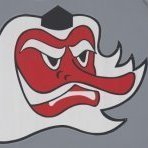
Lukgraph DH 89 Rapide
scvrobeson and 4 others reacted to Kagemusha for a topic
Thanks Mike, just ordered the Scottish Airways boxing, hope it comes with some shortbread...5 points -
One more detail with the Silouette cutter. The Duch Decals I have been saving for this build was totally unusable. I bought them about 20 years ago and I suspect it is the age of the decals that caused the problem. I think some decal sheets just do not age well. I copied the details onto AM clear decal and used some of that. It came out with a some pixels showing, but looks good from normal viewing distances. The circle around the dog's head was also cut and masked. I fortunately found a good photo of the subject to digitize the mask from. And with that the build is done. Only to post on RFI. Nick5 points
-
Tamiya 1/32 JASDF F-4EJ Black Panthers
Greg W and 4 others reacted to spyrosjzmichos for a topic
Hi everyone! Made some good progress in the past three weeks. In my previous update I spent time detailing the wheel wells and undercarriage struts. With that stage complete I moved on to painting. I used MRP for the overall white colour and Vallejo acrylic steel for the pipes and hoses. Everything was highlighted with a black wash from Tamiya's panel liner series. Some Eduard placards were placed here and there to add a few more detail touches. I also took the opportunity to complete the covers and engine exhausts. Next, I tried to tackle the kit's worst engineering aspect, the engine area. I wanted to install the horizontal stabilisers at a later stage to ease painting and also reduce the amount of assembly in that area post painting due to the metallic colours. I finally decided to saw through the connecting tube between the stabilisers and clear up the plastic. Both parts can then be slotted into place by rotating them slightly so the lower area can sit inside the hole of the tail area. They will have to be glued in place to ensure proper placement but I never planned to play around with them in the first place anyway... The separate lower section of the engine was then glued in place and all joints were sanded smooth after filling with a mixture of super glue and talcum powder. Any lost detail was rescribed to the best of my abilities. I also installed the top wing sections in place and used mr surfacer to close any gaps that appeared near the fuselage join. I added a bit of detail in the parachute area but to be honest not much is visible... By the way, is it me or Eduard's exhaust cans are grossly undersized??? Any suggestions on how to fix that?5 points -
Here is my latest scratchbuild, a Thomas Morse S4C, known as the Tommy. I think this is a significant plane as most WW1 aviators had time in one. This 1/32 scale rendering has a Vector resin engine and a turned aluminum cowling. Turnbuckles by Gaspatch and Eduard. Insignias painted on. Thanks for looking in. Comments welcome.4 points
-
Thanks for the update Mark, very, very much appreciated!4 points
-
My new screen saver. Man-o-man, Bernd, that finish is incredible. It is so damn textural. You've got to share your process. Thank you. Sincerely, Mark4 points
-

The antique BoB Revell Spitfire Mk.I
Archimedes and 2 others reacted to thierry laurent for a topic
Hi gents, When I started building my MiG-27, I was already working on this oldtimer. However, as nothing is painted, nor closed, I'm sure there is no problem to add this kit in that group build. Useless to say I'm probably the worst modeller on earth regarding compliance with deadlines (too many ones in my job I guess!) but I don't care. Indeed, I'm sure this thread will be useful as I made a kind of basic tweak list describing all the modifications to make! I already made some of them and will show that in pictures. Obviously as I have to split my time between the two builds, this will not help but if you don't dare, you never win! The kit has a quite nice surface treatment. To me this is really one of the best ever done. Moreover, no thick plastic here but this can become a drawback in some circumstances. However, this is not all rosy! The adjustment of most parts is a nightmare and the level of inside details and most small parts is very bad. So, this is not the kind of kit you can easily build OOTB to get something correct...alas! I'm using the 1990 re-edition for this build but I have one or two older boxes stored somewhere! The scheme will be one of two late Mk.Is used by the "City of Chester" 610th Squadron. I still do not know if I will replicate DW-Q or DW-K as I have decals for both. Unfortunately, getting information regarding the early Spits is a minefield. After some hours of research in my notes and at least a dozen of books, here's the list of modifications I have already identified to improve my kit: - Replace the propeller with a De Havilland one from the Revell 2014 kit, correct its tip shape and add the screws on the propeller edge (generally absent on kits) - Replace the canopy with an Hasegawa Mk.II spare one - Enlarge the nose a little bit to be compatible with the propeller diameter - Reinforce all the seams between the fuselage halves with strips of plastic - Fill all the huge gaps and add the missing material on the nose panels - Replace the horrid exhausts (I will finally use the Model Monkey 3d printed ones) - Add the tank plug in front of the windscreen (and the two small holes located close to it) - Add the small bumps on the top of the nose - Add the typical early mirror on top of the windscreen - Remove all cockpit related tabs or features on the fuselage sides - Replace all the cockpit components. I will finally use a modified Aires Mk.V pit with an Eduard Mk.II IP, a converted Barracuda seat, some Barracuda parts (essentially the radio ones on the port side), some modified items from the kit and some scratchbuilt parts (such as the radiator lever on the port side of the seat and the armor plate behind it). The seat must be changed to a metal one with the round recess rather than the lozange-shaped one. Finally, I will add the Sutton belts and their rear fixing mechanism. - If possible recreate a Mk.I IP (no aftermarket available) or use a Mk.II one - Add the red-painted tank behind the IP as well as the connection hose (they were partly visible on the Mk.I as there was no bulkhead behind the IP) - Create the early bell-shaped voltage regulator, its support plate and its cabling - Add the canopy ejection system (Barracuda) - Add the structure of internal bulkheads and strengtheners in the fuselage, behind the cockpit (at least what will be more or less visible because that section is painted silver) - Add the flare launcher (basic shape) - Add the TR radio box and its supports (basic shape) - Replace the cockpit door and remove the crowbar supports as the Mk.I did not have it initially (it appeared later and was retrofitted) - Correct the mast profile (the kit one is too squared) - Drill the small oxygen hole in the fuselage close to the canopy rail - Fill most of the heigth of the canopy rail trenches without damaging the fuselage rivets - Drill and thin the belly intake lips - Replace the wheels (I will use the Brassin ones on that kit) - Correct the LG bay doors (thin them, correct the perimeter shape, add the internal side and lengthen them before adding some rivet lines and the four large screws on the external face) - Remove the brake drums from the LG legs, correct and add many small details on them (including the brake lines) - Add LG bays (I started from Aires Mk.V ones but removed the strengtheners to add early ones made in plastic). A bean-shaped hole should be added to simulate the embossed wing area intended to give room to the wheels. - Add the gun camera hole in the port wing leading edge as well as its oblong access panel in the wing fairing front - Fill the power plug hatch in the rear of the port wing fairing - Add the small oval bump close to each wing root - Add the bean-shaped LG well bump on each wing (I made them out of leftover Hasegawa 109 bumps!) and add the missing rivets on the wings (over the LG bays) - Add the two fairings protecting the exhaust holes of the wing heating system under each wing tip. - Correct the location of the MG holes in the wing leading edge - Rebuild all the internal components of the radiator (mix of plastic card, tubes and spare Eduard and RB photoetched radiator parts) - Rebuild the oil cooler (thin the edges, add a tube inside with Eduard spare round photoetched parts) - Thin the internal side of the wing trailing edge - Recreate more accurate wingtip lights - Sand cautiously the gull wing shape at the fuselage and wing junction - Drill drain holes - Drill the landing light, recreate it - Fill all the huge gaps or add the missing material on the elevators, rudder, and ailerons (remove all the hinges first) - Add the rudder actuator arm on the side and the visible hinge parts of the elevators if they are positioned down - Reshape the tail wheel leg, add all the large screws and replace the wheel This is a quite important amount of work but there is currently no easy strategy to get a Mk.I as the thread in the Discussion forum showed it. I'm confident the kit will look OK in spite of the shape issues I will not correct (mainly the wing span). Wait and see!3 points -
Me262 A-1a Yellow 3
LSP_Kevin and 2 others reacted to David Mooney for a topic
Hello all, I hope everyone is keeping safe in these crazy times. While I have been off due to this enforced lockdown I started the Trumpeter ME262 A-1a heavy armament kit and wanted to do it in the colours of yellow 3 from KG(J)54. The kit decals seemed a big 'off' so I invested in Eagalcals #95-32 sheet and the colours seemed much better than the kit originals. I have been my best to get the scheme right, but even I will admit that its not quite right, but I think it looks pretty good, certainly a good learning session for sure. Painted with Gunze Sanyo (best paints EVER in my opinion) and weathered with oils. I'd like to add that the markings aren't symmetrical as that's the way they are on the original aircraft (very odd that) All comments welcome3 points -
3 points
-
If JetMads decides not to include masks for the tricky splinter, I wonder if DN Models would consider scaling up their 72nd scale splinter masks3 points
-
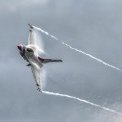
My first double build - Calling them DONE - Pic’s in RFI
dodgem37 and 2 others reacted to Stokey Pete for a topic
After a bit of a mammoth deciphering and masking session, I’ve come to an end of the first part of this epic paint job. I have to say, the masking instructions are atrocious. They’re confusing, the masks are numbered incorrectly in many places, leaving you to either guess or make up your own positioning. It would have been simpler to just have separated diagrams for the various colour sections of the masking, just the white, just the blue, just the black, on individual pages. So before I commit to paint, I’ve got it as close to the pictures as I can, given what there is to work with. The correct number of white and blue stripes will be seen. Here’s where I’m at... I’m not 100% happy with the overall finished masking (maybe 90-95%), but short of spending money to replace them, or attempting it freehand with tape, I can live with it. It looks reasonably close to what the diagrams and reference photos show. I shall be suggesting to the manufacturers that they revisit their instructions and numbering system.3 points -
Aaaaaaaaaaaaaaaaaaannd another!3 points
-
Just got my confirmation email! Hello, We are pleased meeting you, thank you for your interest in our brand and products. Please be informed that we hereby confirm your reservation for one copy of our upcoming JA37 Viggen kit. Kind Regards, JETMADS Team3 points
-

1:32 scale - Siemens-Schuckert D.III
corsairlada and 2 others reacted to sandbagger for a topic
Hi all, I've separated the resin elevator from the tail plane and added 0.4 mm rods, to enable the elevator to be animated. The pilot's and ground crew grab handles were drilled out, reshaped then 0.85 mm styrene rectangular rod added to correct the open shape and correctly locate the handles (which were actually a fuselage longeron). The forward decking panel was hinged at both sides by continuous hinges located under the cooling jackets for the two machine guns. These are not moulded on the kit part so have been represented by using 'Aviattic' photo-etch rib tapes. Mike3 points -

Ivan Kozhedub - 1/10 Mitches Military Models bust
Thomas Lund and 2 others reacted to Kagemusha for a topic
Nice work Thomas, I only came across this by google after I just bought one!3 points -

Any Revell 1/32 Me 262 resin detail set available?
VintageEagle and 2 others reacted to Kagemusha for a topic
Yahu do an ip, and Quickboost a seat, with moulded on seat belts.3 points -
Zimmert use on aircraft?
Sepp and 2 others reacted to Oldbaldguy for a topic
Early allied Mustang operating from forward bases in combat, correct? Absent any definitive explanation, seems to me most likely that the goo on the wings is a local attempt at an anti-ablative coating applied to keep rocks and boulders picked up by that big prop during ground ops and take off from beating the crap out of the aluminum skin of leading edge of the wing and horizontal stab. Note that it goes from the wing root out to the landing gear where it appears to stop. This area is exposed to constant prop blast and is the least aerodynamically sensitive part of the wing in most cases. The rest of the leading edge is likely not coated with this stuff because, if it were, it would be like trying to fly with a load of ice all the time; no sane pilot would do that. Whatever the reason for it, it looks pretty permanent and was painted to match the airplane.3 points -
Sure.. will post more details this weekend!3 points
-

Very Early Spitfire Mk1 Help
MikeMaben and 2 others reacted to thierry laurent for a topic
Am I the only one thinking this kit is nice but looks like a die cast model...? I guess this is probably the mix of deep panel lines and absence of any weathering or color modulation....?3 points -
I've been working on the cockpit area for a few days, odd moments here and there. I've come to the conclusion that I've massively over-thought the seat belts in particular, trying to get them looking as natural as possible (still not finished!) but really not succeeding that well, so given the limited view into the cockpit some kind of compromise is necessary, and with that decision made I've been able to move to the next step......seeing if the Aires tub fits into the Echelon fuselage. Well I suppose it was naive, if not downright stupid of me to expect it to, and it doesn't! My fault of course, not Aires, because it is designed for the Trumpeter kit! So a little sculpting is needed but it's one of those "pat your head and rub your tummy" situations. We'll see......onwards!!!3 points
-
Time for another update. Got my paint set in yesterday, so the cowlings were sprayed with primer before I went to work, then given a coat of FS36375 Lt Compass Ghost Grey. I tried to randomize the paint intensity to mimic the patchiness of a Bug's paint, and am reasonably happy with the result. I was a bit worried when I first sprayed the cowlings, what with the color looking very light, even over black primer. But once I attached them to the rest of the intakes, those fears quickly went away and, at least to me, it looks right. So, I will say once again, I am extremely happy with MiG paints, and think I have found my new go-to paint brand! I will now let the glue set during the day, and probably also tonight, and attempt to attach the side walls tomorrow. Hope you are still enjoying the build, I know I am. Thanks for stopping by the hangar!3 points
-
Trumpeter 1/24th Bf-109G
daHeld and 2 others reacted to crobinsonh for a topic
In fact my first German anything from a modelling perspective. I was dramatically reducing my stash when I came across the Trumpeter Bf--109G. I think I bought this in 2006 for the princely sum of £29.99. Over the years the box gathered dust but I did accumulate the Verlinden cockpit detail set and the Contact Resine wheels, spinner and prop blades along with Eduard placards set. I am NO expert at all of Bf-109's so I am sure that I am about to commit many sins for which I will apologise now. if you see something then please let me know as this is all about education from my perspective. I have started the Verlinden cockpit and as I will not be exposing the engine this has just been painted satin black. I apologise for the photos - all with my iPhone 8 and in the kitchen as the light box and Sony A9 is all packed away at present. I am looking to do create a well worn and heavily used 109 late in the war - I have not decided on markings yet. Onto the first set of images - I have added extra details to the Verlinden set using the SAM publication and the Aeroguide as reference material. As well as the exquisite Bf-109 builds of many members on the site - in particular @Thunnus Next stop HGW seat belts and finishing touches.3 points -
I still think it was done to increase damage resistance. If you read the caption of that photo, it notes that the planes were extremely worn and chipped by the sand and gravel of their Italian airfields kicking up on the planes, and it notes that the "stucco" portion of the wing is not as worn. It seems to imply, but does not directly state, that the stucco was the reason. I also noted that the stucco portion in the photo is the inner portion of the wing, nearest the fuselage. Undoubtedly, that area behind the prop would take the worst beating from sand kicked up during takeoff and landing. No idea if the whole leading edge would have been coated with it, but maybe. Very interesting bit of info. I have never encountered this before. I wonder if it was a common thing. Tim3 points
-
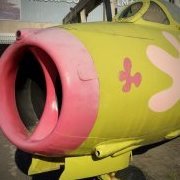
1:32 Douglas A-26 Invader from Trumpeter/Hobbyboss?
Daniel Leduc and 2 others reacted to Lietsalmi for a topic
And yet another update... Please, let me know if I get too wild. I checked the production blocks and serial numbers of early A-26B's. For me the most challenging modification would be the later style bubble canopy so I am focusing on the flat style canopy versions. So, now, which serial numbers could be built with relative ease with the Hobby Boss kit? Here is my summary: The first 500 production A-26B's up to the production block A-26B-40-DL were built at the Long Beach factory and the bubble canopy was introduced already with the block A-26B-30-DL. The Long Beach factory had the 'DL' ending of the production block (D: Douglas, L: Long Beach). During the whole Douglas A-26 Invader production 205 A-26B's were produced also at the Tulsa factory and their block numbers end with 'DT'. At the Tulsa factory they started with A-26B-5-DT, i.e., with one of the flat canopy versions. Only prototypes were produced at the El Segundo factory and they had the 'DE' block number ending. There were 450 flat canopy A-26B's produced in total but the first 35 had some really interesting nose gun trial arrangements, which means scratch building if you want to build any of those. The first production block A-26B-1-DL (5 aircraft, s/n 41-39100 to 41-39104, c/n 6813 to 6817) had the same nose armament as the prototype, i.e, one 75 mm cannon plus the turrets. The next production block A-26B-5-DL and A-26B-5-DT planes (30 aircraft in total, 15 aircraft from Long Beach: s/n 41-39105 to 41-39119, c/n 6818 to 6832, 15 aircraft from Tulsa: s/n 43-22252 to 43-22266, c/n 18399 to 18413) were armed with 1 × 75 mm cannon on the right side of the nose and 2 × 0.50 in (12.7 mm) machine guns on the left and 2 × 0.50 in (12.7 mm) guns in each of the turrets. So for these first 35 planes you should modify the nose for the 75 mm cannon and scratch build the cannon. Not that difficult but still some extra work. A new all-purpose nose was installed beginning with the A-26B-10-DL (55 aircraft, 20 aircraft from Long Beach: s/n 41-39120 to 41-39139, c/n 6833 to 6852, 35 aircraft from Tulsa: s/n 43-22267 to 43-22301, c/n 18414 to 18448). They had 6 × 0.50 in (12.7 mm) guns in the nose and 2 × 0.50 in (12.7 mm) guns in each of the turrets. This is quite easy to build with the Hobby Boss kit because all the needed guns are included. Next blocks A-26B-15 through A-26B-25 (360 aircraft, Long Beach: s/n 41-39140 to 41-39349, c/n 6853 to 7062, Tulsa: s/n 43-22302 to 43-22466, c/n 18449 to 18613) had 8 × 0.50 in (12.7 mm) guns in the nose, 2 × 0.50 in (12.7 mm) guns in each of the turrets and 4 additional gun packs mounted on the underwing hard points, each with 2 × 0.50 in (12.7 mm) guns. This is the most straightforward build with no modifications needed for the nose section. I also found a mention that this 8-gun-nose may have been retrofitted to some earlier planes as a field modification. Some planes had an exit hatch on the right hand side of the gunner position. Again, check your references. The kit has that hatch molded with panel lines and a clear window. If your plane did not have that, you can just fill the panel lines, paint over the window and copy the internal structure from the left half of the fuselage interior. All the flat canopy A-26B's had the lower turret installed at the factory. Only with the later bubble canopy aircraft destined for service in the Pacific (-51-DL, -56-DL, -61-DL, and -66-DL), the lower turret was replaced by a 125-US gallon auxiliary tank for extra range. There are mentions that the lower turret may have been removed from some aircraft because of increased drag and to improve the center of gravity. Also during low level missions the lower turret was considered useless. So again, check your references and you may find some flat canopy A-26B's without the lower turret which makes the kit modification easier. However, as I said in my earlier post, I am planning to make a resin part for the lower fuselage and that will add the missing lower turret. To me this is easier than trying to replace the clear flat style canopy of the kit with a home-made bubble canopy. By the way, if anyone needs the exact block number, production site, serial number or construction number of a certain plane, I can help with that. I combined information from a few sources and made an Excel sheet with all the produced Douglas A-26B Invaders. Just let me know. Or just check https://www.abcdlist.nl/main.html - they have a very accurate list of all Douglas aircraft.3 points -
2 points
-
Got mine also, amazed it's all happened so quick.2 points
-
bummer on that - was hoping maybe a way to use the vac parts with this new kit. I guess wait and see if the next release has that canopy and it is mostly accurate or if aftermarket comes to the rescue but not sure there is much chance of that.2 points
-
maybe bare metal Mark2 points
-
This little experiment made me very happy! Trial fit of one of Iain O's resin intake rings with the nose cone/bullet and trunking, pretty good. The "fin" on the bullet isn't in the right place, and the front end of the whole assembly is floating, just the back end fan is lightly glued to the fuselage former. This is to ensure downstream that the nose cone can be centred (hopefully!).2 points
-

F 86 Sabre....finished
themongoose and one other reacted to chrish for a topic
The clean space is now anticipating a 1/32 CF-188 with Leading Edge decals “60 years of NORAD“...we’ll see what happens2 points -

Green windscreen tint
Daniel Leduc and one other reacted to Iain for a topic
This is a mix of Tamiya Clear Blue and a little Clear Yellow + some thinners, applied by brush to the inside of the front armoured glass. Left with the front of the relevant pane facing down on a flat surface whilst it dries and, as Steve mentioned, be careful to prevent any pooling... And less is more in my experience - if that makes sense? Iain2 points -

1/32 ERA-3B Skywarrior - 3D printed / scratchbuilt
daveculp and one other reacted to Starfighter for a topic
Thanks Gentlemen - I am quite happy with the current progress indeed. The camera blisters are not fitted and puttied. I have also added the surrounding strengthener which I have cut on my Silhouette, but I have not yet photographed it. The LH side elevator base is ready as well, the RH side one currently doesn't print properly - no idea why.2 points -
Su-25UB
Hartmann352 and one other reacted to mark31 for a topic
small update on the pit Didt some work on the front ip still needs the hud Thats it for now Mark2 points -
Thanks for the confirmation guys! That's what I thought but blades in the photo looked a bit wide. After a long shipping delay, I finally received my "care package" from Kahunaminor. Thanks so much Kent! The next order of business would be the wheel wells but I'm not quite ready to jump in with the sawing/cutting yet so let's take a look at some of the other upgrades. The shape of the kit oil cooler intake is a little off... too straight-sided. The Barracuda replacement is designed for the Revell G-6 kit so I was curious to see if I could get it to fit the Hasegawa model. Looks like a very good match! You can readily see the differences between the kit and resin parts. Also included is the Barracuda G-6 prop and spinner upgrade. The shape of the kit spinner is a little too bulbous and has incorrectly shaped openings for the prop blades. I'm not quite into full modeling mode right now. With that part of my brain not fully engaged, I stuck with something simple to while away my lunch hour and removed the casting block from the back of the spinner. A hole will need to be drilled out in the center.2 points
-

1/32 Hasegawa P-47 "Oh Johnnie"
Tolga ULGUR and one other reacted to JefH for a topic
Well it's been about a month. I've been slowly working on the Jug but unfortunately not documenting my work too carefully. First time using masks for painting the markings. Honestly one of the most satisfying things I've done since returning to the hobby. I used Gunze and Tamiya paints as I can't find MRP in Canada yet. Lots more work to come, but it's a start. Thanks for looking and stay safe. Jeff2 points



